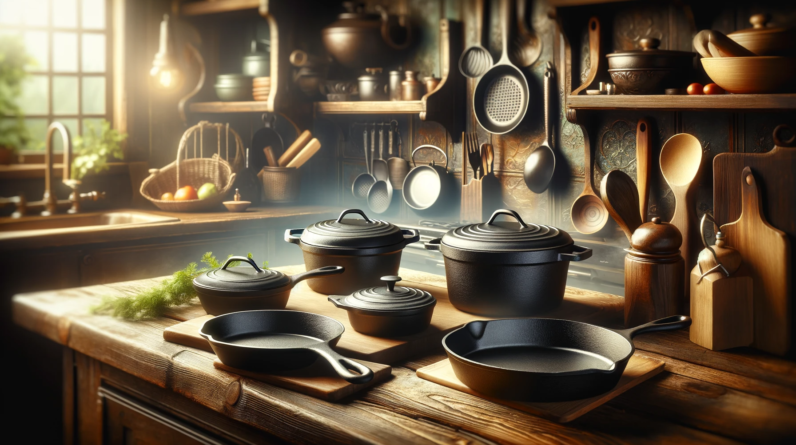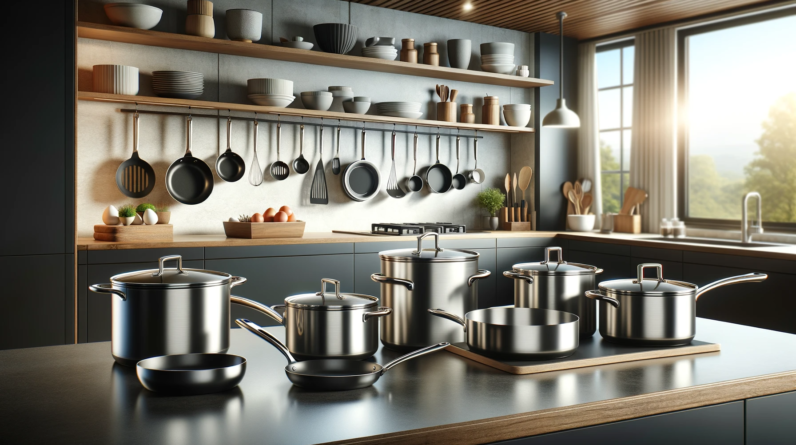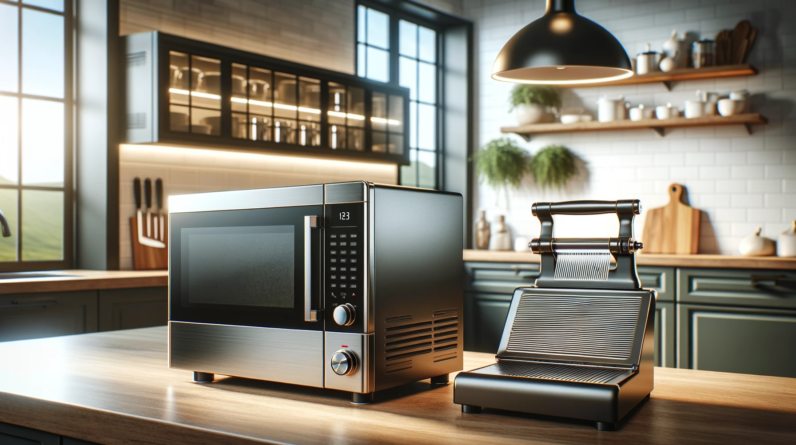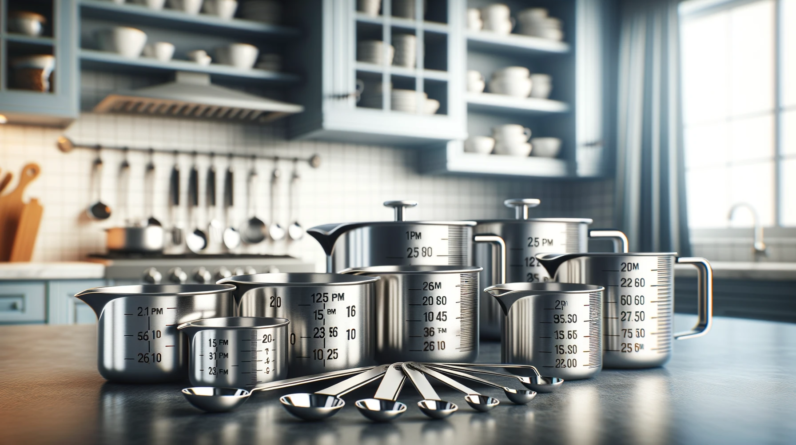Disclaimer: This post may contain affiliate links. As an Amazon Associate, we earn from qualifying purchases.
When it comes to choosing the perfect utensils for your kitchen, the decision between wooden or silicone can leave you scratching your head. Both options have their own unique benefits and drawbacks, making it a tough choice for any aspiring home chef.
But fear not, because we’re here to help you navigate through this culinary conundrum, providing you with all the information you need to make an informed decision. So grab a cup of tea, sit back, and let’s dive into the wonderful world of wooden and silicone utensils.
Durability
Wooden utensils
 Wooden utensils are known for their durability and longevity. They are made from sturdy, solid wood which can withstand daily use and the pressure of stirring, flipping, and serving food. With proper care, wooden utensils can last for many years without showing signs of wear and tear.
Wooden utensils are known for their durability and longevity. They are made from sturdy, solid wood which can withstand daily use and the pressure of stirring, flipping, and serving food. With proper care, wooden utensils can last for many years without showing signs of wear and tear.
They do not easily break or crack, making them a reliable choice for any kitchen.
Silicone utensils
Silicone utensils are also highly durable. They are made from a flexible and heat-resistant material that can withstand high temperatures without warping or melting. Silicone utensils are designed to be sturdy and long-lasting, able to withstand repeated use without losing their shape or functionality. They are also resistant to stains and odors, making them easy to clean and maintain.
Heat resistance
Wooden utensils
Wooden utensils have natural heat resistance properties, allowing them to be used in high-temperature cooking without any issues. They do not conduct heat like metal utensils, meaning they won’t get hot and burn your hands when used in hot pans or pots. However, it’s important to note that leaving wooden utensils in a hot pot for an extended period of time may cause them to absorb moisture and potentially warp or crack.
Silicone utensils
 Silicone utensils are known for their exceptional heat resistance. They can withstand high temperatures without melting or deforming, making them perfect for use in hot pans, ovens, and grills. Silicone utensils are also non-reactive, meaning they won’t release any harmful chemicals when exposed to heat. This makes them a safe choice for cooking and baking at high temperatures.
Silicone utensils are known for their exceptional heat resistance. They can withstand high temperatures without melting or deforming, making them perfect for use in hot pans, ovens, and grills. Silicone utensils are also non-reactive, meaning they won’t release any harmful chemicals when exposed to heat. This makes them a safe choice for cooking and baking at high temperatures.
Versatility
Wooden utensils
Wooden utensils are highly versatile and can be used for various cooking tasks. They are suitable for stirring, flipping, sautéing, and serving different types of food. Wooden spoons, spatulas, and tongs are commonly used in many cuisines around the world.
Their smooth surface and gentle edges make them perfect for delicate tasks like mixing batters or scraping the bottom of pans without scratching the surface.
Silicone utensils
Silicone utensils are also very versatile and can be used for a wide range of cooking tasks. They are available in different shapes and sizes, including spoons, spatulas, whisks, and basting brushes. Silicone utensils are ideal for non-stick cookware as they are soft and flexible, preventing any scratches or damage to the surface.
They can easily bend and contour to the shape of bowls or pans, making it easier to scrape out every bit of food.
Maintenance
Wooden utensils
Wooden utensils require some specific maintenance to ensure their longevity. It is recommended to hand wash them with warm soapy water and dry them immediately to prevent any warping or cracking. It’s important to avoid soaking wooden utensils for long periods or putting them in the dishwasher as this can damage the wood.
Additionally, it’s good practice to periodically oil wooden utensils with food-grade mineral oil to maintain their smooth, moisture-resistant surface.
Silicone utensils
Silicone utensils are incredibly easy to maintain. They are dishwasher safe, making cleanup a breeze. The non-stick surface of silicone utensils prevents food from sticking to them, saving you time and effort during the cleaning process.
They are also resistant to staining and odor absorption, ensuring that your silicone utensils stay looking and smelling fresh even after extended use.
Aesthetics
Wooden utensils
 Wooden utensils have a timeless and natural aesthetic that brings warmth and beauty to any kitchen.
Wooden utensils have a timeless and natural aesthetic that brings warmth and beauty to any kitchen.
The grain patterns and variations in color make each wooden utensil unique and visually appealing. Wooden utensils can also complement different kitchen styles, from rustic and farmhouse to modern and contemporary.
They add a touch of elegance and charm to your cooking experience.
Silicone utensils
Silicone utensils come in a wide range of vibrant colors that can add a pop of fun and personality to your kitchen.
They offer a modern and sleek appearance that works well in contemporary kitchens.
Silicone utensils are available in various shades, allowing you to choose colors that match your kitchen decor or reflect your personal style. They can be a stylish and attractive addition to your cooking tools.
Handling and grip
Wooden utensils
Wooden utensils are praised for their excellent handling and grip. The natural wood provides a comfortable and ergonomic feel, allowing you to have full control over your food while cooking. The smooth texture of wooden utensils prevents them from slipping out of your hands, even when they are wet or greasy.
Additionally, wooden utensils tend to be lightweight and easy to maneuver, reducing strain on your wrists and arms.
Silicone utensils
Silicone utensils also offer a comfortable and secure grip. The soft and flexible material molds to your hand, providing a non-slip surface even when wet.
Silicone utensils are designed with textured handles or grips to enhance handling and control. Their lightweight construction makes them easy to handle, reducing the risk of accidents or dropping while cooking.
Environmental impact
Wooden utensils
Wooden utensils are a more sustainable and eco-friendly choice compared to their plastic counterparts. They are made from a renewable resource – wood – which can be harvested responsibly.
Wood is biodegradable, meaning that when wooden utensils eventually wear out, they will naturally decompose without leaving a lasting environmental impact. Opting for wooden utensils helps minimize the use of plastics and reduces waste.
Silicone utensils
Silicone utensils are not biodegradable, which can be seen as a drawback in terms of their environmental impact. However, they are a durable alternative to disposable plastic utensils. By investing in silicone utensils, you can reduce the amount of single-use plastic utensils that end up in landfills.
Additionally, silicone is a safer material compared to plastic, as it does not release harmful chemicals when exposed to heat or microwaved.
Cookware protection
Wooden utensils
 Wooden utensils are gentle on cookware surfaces. Their soft edges and smooth finish prevent scratching or damaging non-stick pans, stainless steel pots, and delicate ceramic cookware.
Wooden utensils are gentle on cookware surfaces. Their soft edges and smooth finish prevent scratching or damaging non-stick pans, stainless steel pots, and delicate ceramic cookware.
Wooden utensils also do not conduct heat like metal utensils, reducing the risk of leaving marks or heat spots on your cookware. Their gentle nature ensures that your cookware stays in excellent condition for longer.
Silicone utensils
Silicone utensils are also designed to protect your cookware.
Their soft and flexible material prevents scratching or damaging non-stick coatings, which can extend the lifespan of your pans and pots.
The heat resistance of silicone ensures that your cookware is not exposed to excessive heat, avoiding potential warping or damage. With silicone utensils, you can confidently use your favorite cookware without worrying about any negative effects.
Cost
Wooden utensils
Wooden utensils are often considered affordable and budget-friendly options. They are readily available in various stores and online retailers at reasonable prices. Depending on the type of wood and craftsmanship, the cost can vary, but in general, wooden utensils are a cost-effective choice for your kitchen.
Silicone utensils
Silicone utensils tend to be slightly more expensive than wooden utensils. The materials used in their production and their durability factor into their higher cost. However, considering their long-lasting nature and the benefits they offer, investing in silicone utensils can be seen as a worthwhile investment in the long run.
Preference and personal choice
Wooden utensils
Choosing between wooden and silicone utensils ultimately comes down to personal preference. Some people prefer the traditional, rustic feel of wooden utensils and appreciate their natural aesthetic. Others enjoy the warmth and comfort they bring to cooking tasks.
Wooden utensils can provide a nostalgic connection to cooking traditions and can be passed down through generations, creating a sense of sentimental value.
Silicone utensils
 On the other hand, some individuals prefer the modern and sleek appearance of silicone utensils. They appreciate the vibrant colors and the flexibility that silicone offers. Silicone utensils can be seen as a more contemporary choice, fitting well in modern kitchen settings and appealing to those with a preference for sleek design.
On the other hand, some individuals prefer the modern and sleek appearance of silicone utensils. They appreciate the vibrant colors and the flexibility that silicone offers. Silicone utensils can be seen as a more contemporary choice, fitting well in modern kitchen settings and appealing to those with a preference for sleek design.
The soft texture of silicone provides a different tactile experience during cooking.
In conclusion, both wooden and silicone utensils have their own unique qualities and benefits. Wooden utensils are durable, heat-resistant, versatile, and bring a natural aesthetic to your kitchen. Silicone utensils are also durable, highly heat-resistant, versatile, and offer a modern and sleek appearance.
Consider your personal preferences, cooking style, and specific needs when deciding which type of utensil is the best fit for your kitchen.






